Long-term care residents will be allowed to have 10 visitors outdoors as Ontario announced plans to ease restrictions at long-term care homes.
The loosened restrictions, announced by new Minister of Long-term Care Rod Phillips, will take effect on July 7.
Residents will also be allowed to have up to two caregivers and two general visitors indoors at the same time. The limit on number of people designated as caregivers has been removed.
Fully immunized visitors will be able to have close physical contact while those who are not must social distance, apart from a brief contact. All visitors will still be required to wear masks.
Within the long-term care homes, personal care services will be allowed and resident cohorting can be eased for outdoor activities.
The province says as of June 28, virtually all residents are fully immunized against COVID-19 and 92 per cent of staff have received at least one dose. Around 84 per cent have both doses of the vaccine.
The ministry also updated its vaccination policy for employees. Any staff, student placements and volunteers will be required to provide proof of vaccination against COVID-19 or provide a documented medical reason for not being vaccinated.
If they don’t provide either of the two above, they must participate in an educational program about the benefits of being vaccinated and risks of not being vaccinated.
This will be effective July 1, 2021.
A further easing of restrictions is also expected when the province enters Step 3 of their reopening plan. This includes the following:
A further easing of restrictions is planned to align with the timing of Step Three of the Roadmap to Reopen. These changes are expected to include:
- Removing the limits on the number of visitors to the homes
- Permitting buffet and family style dinning
- Providing that all residents will be able to go on absences regardless of immunization status
- Resumption of off-site excursions for residents
- Resumption of activities such as singing and dancing
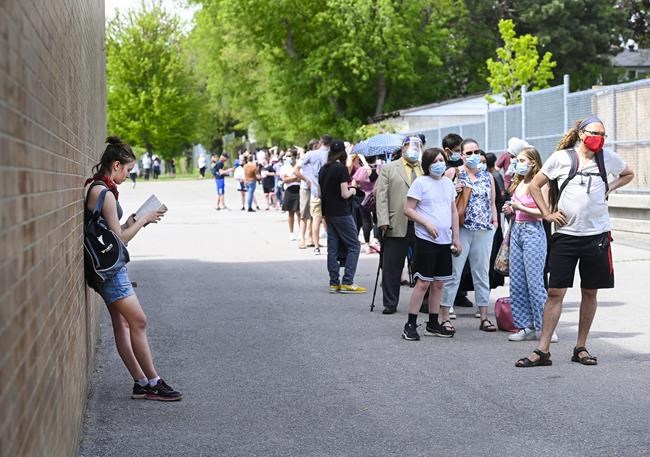
Ontario is reporting 210 new COVID-19 cases and three deaths on Monday.
It is the smallest daily increase of new infections since Sept. 13.
The province is reporting a test positivity rate of 1.8 per cent, down slightly from 2.5 per cent one week ago.
There were 13,071 tests completed in the last 24-hour period.
Locally, there are 37 new cases in Toronto, 26 in the Region of Waterloo, 25 in Grey Bruce, 15 in Peel Region, 12 in Hamilton and 12 in Niagara Region.
There were another 326 resolved cases, dropping the active case count once again. Resolved cases have outnumbered new infections each day since mid-April.
The rolling seven-day average drops to 276, reaching the lowest point since Sept. 17.
The province reported 287 cases and 12 deaths on Sunday.
There are now 218 people hospitalized in the province testing positive for the virus and there are 287 in the ICU with COVID-19 complications. The amount of people testing positive in the hospital reached an eight month low on Sunday.
There were more than 202,672 vaccine doses administered in the last 24-hour period.
As of 8:00 p.m. Sunday, 14,07,510 doses of the COVID-19 vaccine have been administered, 76.4 per cent of Ontario residents 12 and older have received at least one dose while 33.4 per cent are now fully vaccinated.
More Ontarians became eligible for an accelerated second COVID-19 vaccine on Monday morning.
The province will allow any residents 18 and older who received their first dose of an mRNA vaccine to move up their appointment. Recipients of a first dose of Pfizer or Moderna can receive their second jab as soon as 28 days after their first shot.
According to the province, this will accelerate second dose eligibility for approximately 1.5 million Ontarians.
Canada should have enough COVID-19 vaccine by the end of this week to fully inoculate 75 per cent of all Canadians over the age of 12.
The country is expecting more than 2.4 million doses of Pfizer this week and 1.4 million doses of Moderna. Those shipments will push Canada’s total vaccine deliveries above 50 million doses to date.
A mass vaccination clinic held Sunday at Scotiabank Arena in Toronto administered close to 27,000 doses of the COVID-19 vaccine, setting a new North American single-day record.
The “Our Winning Shot” initiative, broke the previous record of 17,003 set back in April at the Texas Motor Speedway in Fort Worth, Texas.
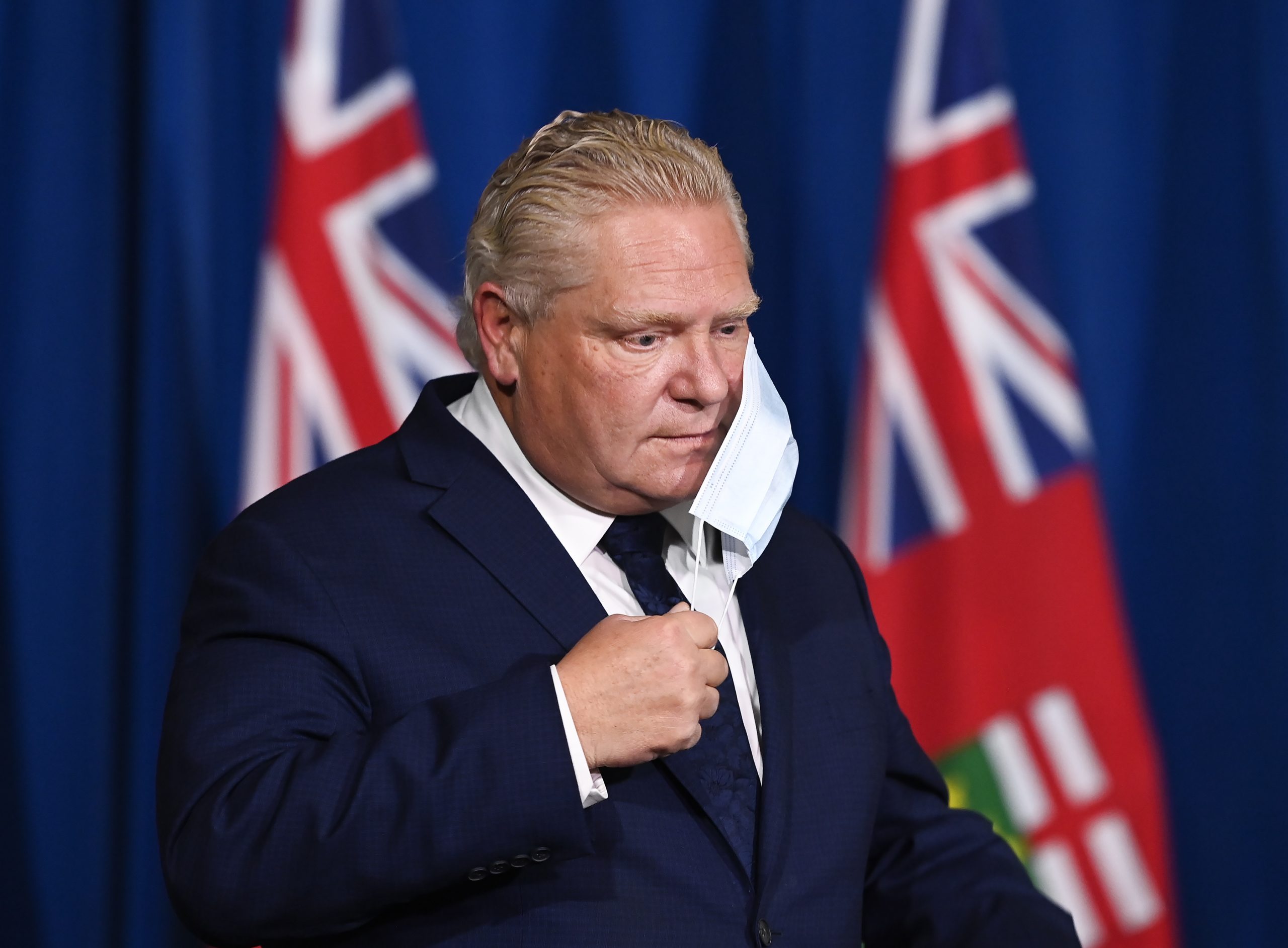
The premier hinted Monday that the reopening of Ontario’s economy may be done quicker than his government’s current plan.
Doug Ford said, “there’s no one that wants to open this province up more than I do, we’re very very close, we’ll be sitting down with the new chief medical officer of health, Dr. Moore, and we’ll get his advice, and if he gives us the green light — lets get this province open and start moving, I can’t wait, I really can’t.”
“The only few things that aren’t open are, you know, the indoor dining which is going to happen, and really outside of the casinos and the strip joints, they’re the only three things that aren’t open now, I’ll be honest with you, everything else seems to be moving forward but again we have to be cautious about the delta variant, and the gyms.”
Hair and nail salons and other personal care services are allowed to resume on Wednesday, when the province moves to Step 2 of the Ford government’s reopening plan, but gyms have to stay closed.
Ford is asking gym owners to remain patient.
“The gyms, my heart breaks for the people, we got to get those gyms open, folks just bear with us for a very short period, it’s going to happen, I have to follow the direction of the chief medical officer,” he said.
Outdoor fitness classes are allowed, but nothing indoors is allowed yet.
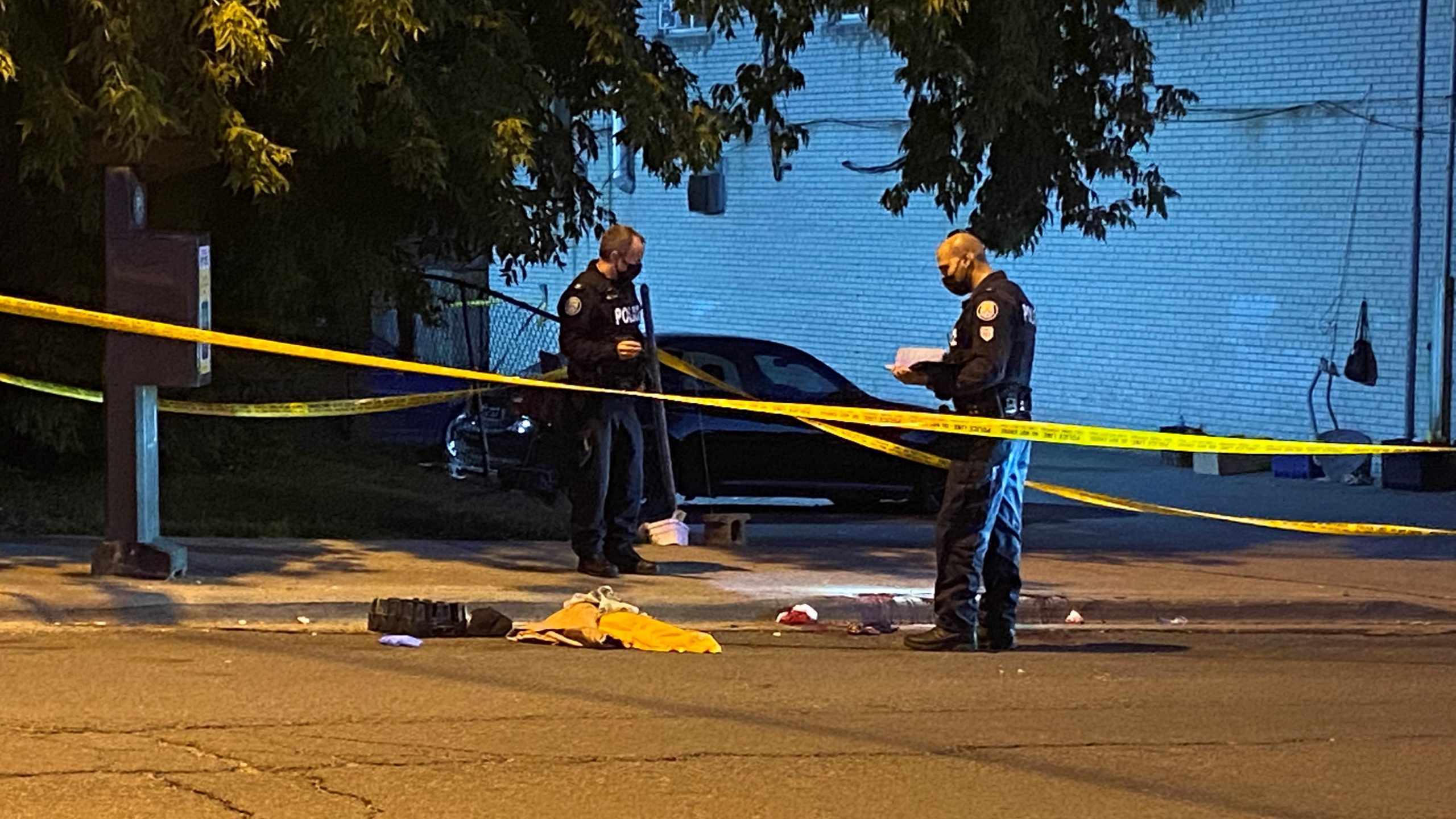
A man in his early 60s is in serious condition after being stabbed in the city’s west end on Monday night.
Emergency crews were called to the area of Eglinton Avenue West and Richardson Avenue, east of Keele just after 8:30 p.m. for reports of two men fighting.
Police say one of the men was stabbed at least 6 times in the upper body. He was rushed by ambulance to hospital with serious, life-threatening injuries. His condition was later upgraded to critical.
“There was apparently some sort of altercation that took place in the parking lot where [forensics officers] are operating right now. And that evolved apparently into a fight and then a stabbing took place,” said Inspector Michael Williams.
A male suspect was last seen fleeing the area towards Keele Street. He was wearing a white or yellow t-shirt and blue jeans at the time and left on a motorcycle or e-bike.
The relationship between the two men is unclear at this time.
Police believe he is armed with a knife and should be considered dangerous. If spotted, police say to call 9-1-1.
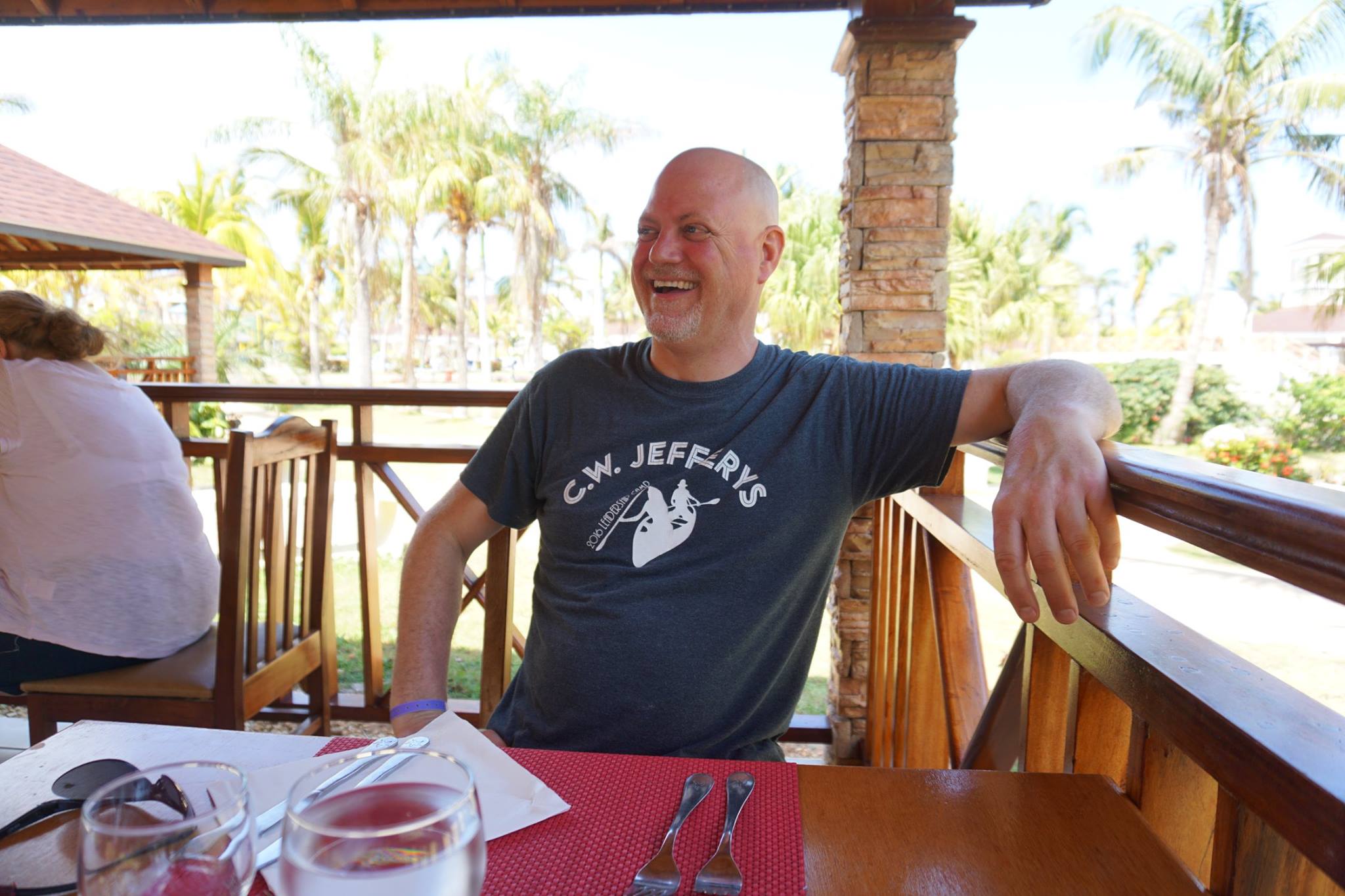
A Toronto teacher who led a school canoe trip during which a teenage student drowned told his trial Monday that he didn’t follow certain safety guidelines established for such trips because they didn’t reflect industry standards and would have prevented some kids from participating.
Nicholas Mills testified that the guidelines for overnight canoe trips set by the Ontario Physical and Health Education Association don’t align with standards and practices used in commercial excursions, private trips and outings organized by Scouts Canada, adding some are “not practical” or “not necessary.”
The rules requiring that students pass a swimming test beforehand without wearing a lifejacket, and that all lifeguards on the trip be over 18 years old, are among those Mills said he didn’t follow for the annual trip, which ran from 2013 until the fatal outing in 2017.
“I knew that you could run safe canoe trips without following all the OPHEA rules, and I don’t even know the number of people who do (follow those rules) every single summer,” he told his trial Monday.
“And it was a really great experience for the kids” to go on the multi-day excursion, he said.
Even so, the rules he did put in place for the school trips were “way above normal standards in the canoeing industry across the country,” Mills said.
Mills, a teacher at C.W. Jefferys Collegiate Institute, organized and oversaw the July 2017 trip to Algonquin Provincial Park during which 15-year-old Jeremiah Perry drowned. He has pleaded not guilty to criminal negligence causing death.
Prosecutors allege the teacher neglected safety rules and requirements related to the multi-day excursion.
Mills said Monday he saw the OPHEA guidelines as just a “framework that you use with your own personal skills,” but acknowledged that if he wrote on his paperwork that they weren’t being met, “the superintendent or someone above me… would not let the trips happen.”
He insisted, however, the school’s principal at the time, Monday Gala, knew students were being allowed to undergo the swimming test with a lifejacket — something Gala denied when he testified earlier in the trial.
The teacher said the pair discussed the issue clearly in the early years of the trip, and noted Gala had seen students take the test in the school’s pool before the process was moved to Sparrow Lake in 2015.
The principal knew “we were modifying the test, just like we were modifying so much else,” Mills said.
He compared allowing lifejackets during the test to giving students with learning disabilities more time to take an exam, saying both measures allowed more students to participate.
Students who did the assessment with a lifejacket would have to wear one to swim during the trip as well, the teacher testified. Everyone had to wear them while in a canoe, he said.
A student who was also on the trip previously testified he never saw Perry without a life jacket on the trip, but said the teen appeared to be a bad swimmer.
Adrian Coufadis told the court earlier this month that he teased Perry about his poor swimming skills after seeing the younger boy struggling to reach their canoe on the first day of the trip.
But Coufadis said he didn’t think at the time to tell Mills about his observation.
The trial is proceeding in person and by videoconference.
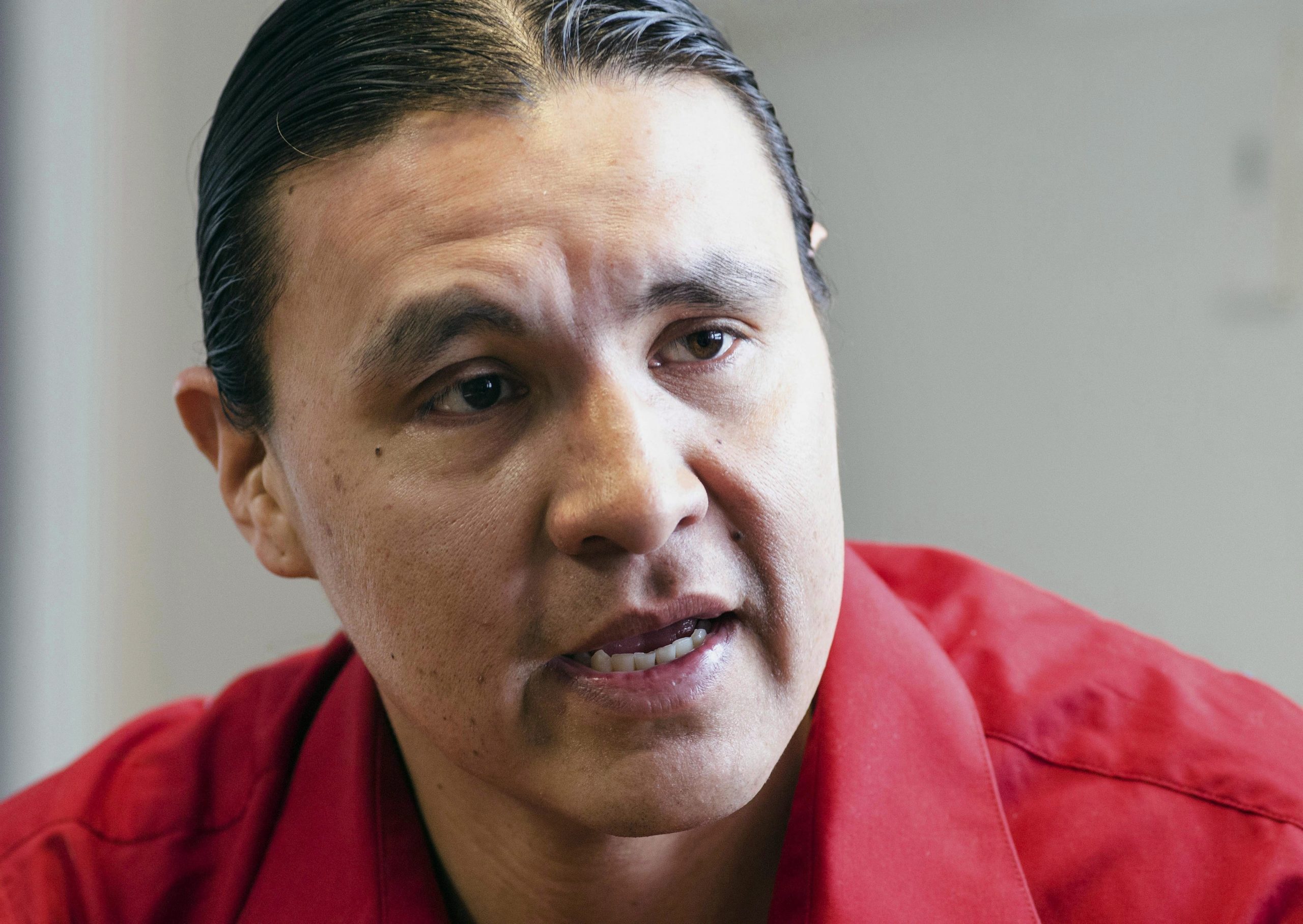
WASHINGTON — It took just two weeks for the first Indigenous cabinet member in American history to publicly express her deep personal dismay at the grim residential school revelations emanating from north of the border.
It was only another 11 days before Deb Haaland, one of the first Native Americans ever elected to Congress and President Joe Biden’s newly appointed secretary of the interior, took matters into her own hands.
“The department shall undertake an investigation of the loss of human life and the lasting consequences of residential Indian boarding schools,” Haaland wrote in a memo last week.
“Only by acknowledging the past can we work toward a future we are all proud to embrace.”
In geopolitical terms, the time between Haaland’s June 22 memo and May 27 — the day a B.C. First Nation announced the grim discovery of the remains of 215 children at a former residential school — was the blink of an eye.
Rarely do developments on Canadian soil prompt such rapid, dramatic policy decisions in the U.S., a telling measure of magnitude for what Haaland’s investigation may uncover in a country where Indigenous issues are seldom considered front-page news.
“There is a reckoning happening,” said Chase Iron Eyes, a prominent U.S. Indigenous activist and lead counsel for the North Dakota-based Lakota People’s Law Project.
“They don’t teach this in schools — not in Canadian schools, not in American schools — that there are mass graves of children at church-run, government-sponsored residential schools and boarding schools.
“And now we’re no longer able to hide from those truths.”
Haaland’s own heritage doubtless helped move things along.
“My great-grandfather was taken to Carlisle Indian School in Pennsylvania,” Haaland wrote in a moving column in the Washington Post this month that opened with the news out of Canada.
“Its founder coined the phrase, ‘Kill the Indian, and save the man,’ which genuinely reflects the influences that framed these policies at the time.”
It’s a chilling echo of words frequently attributed to Canada’s first prime minister, Sir John A. Macdonald — “take the Indian out of the child” — in his 19th-century defence of Canada’s residential school system.
The similarities between the systems that existed in Canada and the U.S. likely don’t stop there.
“I think the scale, in terms of sheer numbers, is fairly comparable,” said Circe Sturm, an anthropology professor and Indigenous issues specialist at the University of Texas at Austin.
By the turn of the century, after the U.S. Bureau of Indian Affairs had taken over Indigenous schooling from the Christian missionaries who started the effort, the department was operating 147-day schools and 81 boarding schools on U.S. reservations, and another 25 boarding schools off-reserve, Sturm said.
In Canada, an estimated 150,000 Indigenous children are believed to have attended one of about 150 residential schools that operated between the 1880s and when the last one closed in 1996.
Haaland’s “Indian Boarding School Initiative” will seek to identify all of the schools that were part of the program, with a particular emphasis on “any records relating to cemeteries or potential burial sites? which may later be used to assist in locating unidentified human remains.”
The department will also liaise with Indigenous communities across the U.S., including in Alaska and Hawaii, on how best to handle any such remains, with plans for a final report by April of next year.
“Many who survived the ordeal returned home changed in unimaginable ways, and their experiences still resonate across the generations,” Haaland wrote.
“The work outlined will shed light on the scope of that impact.”
The potential scale of the situation in Canada took a dramatic turn Thursday when the Cowessess First Nation announced the discovery of what are believed to be 751 unmarked graves at the site of the former Marieval Indian Residential School on southern Saskatchewan.
That news generated uncommon media interest Friday in the U.S., where the Post played it on the front page and the New York Times devoted a full inside page to coverage of the discovery, as well as Haaland’s announcement.
Sturm demurred when asked whether she expects broad change in U.S. attitudes toward Indigenous Peoples on a scale comparable to last year’s social upheaval in the wake of the death of George Floyd.
“I suspect that many Americans will struggle with the hard truth about the founding of this country _ some by choosing to ignore it, others with guilt and anger,” she said.
“But because we are talking about the senseless death of children, there is a good chance that a significant number of Americans would be moved enough to insist on action.”
If such discoveries are what it takes to finally end public complacency about the plight of Indigenous Peoples in Canada, so be it, Prime Minister Justin Trudeau suggested Friday.
The federal government intends to help with “the healing and the fixing of the generations of trauma that Canadians have all too often turned an eye from, all too often shrugged away from,” Trudeau said.
“And if it took discovering these graves for Canadians to wake up to how much we need to continue to do, then that perhaps gives us a starting point to continue to do even more.”’
Indigenous leaders in Canada have been pressing Trudeau to secure an apology, on Canadian soil, from Pope Francis himself for the role the Catholic Church played in operating residential schools.
Those demands _ which Trudeau repeated again Friday — have so far gone unheeded. But they may carry more weight if, in the fullness of time, Biden is in a position to join the call.
“I think Trudeau and Biden together is a stronger force than either of them alone. I do believe that,” Iron Eyes said.
“We need those calls to come from within the Christian community, because those ‘ideals’ upon which these countries were founded were very much informed by Christian and Western theology and world views.”
This report by The Canadian Press was first published June 27, 2021.
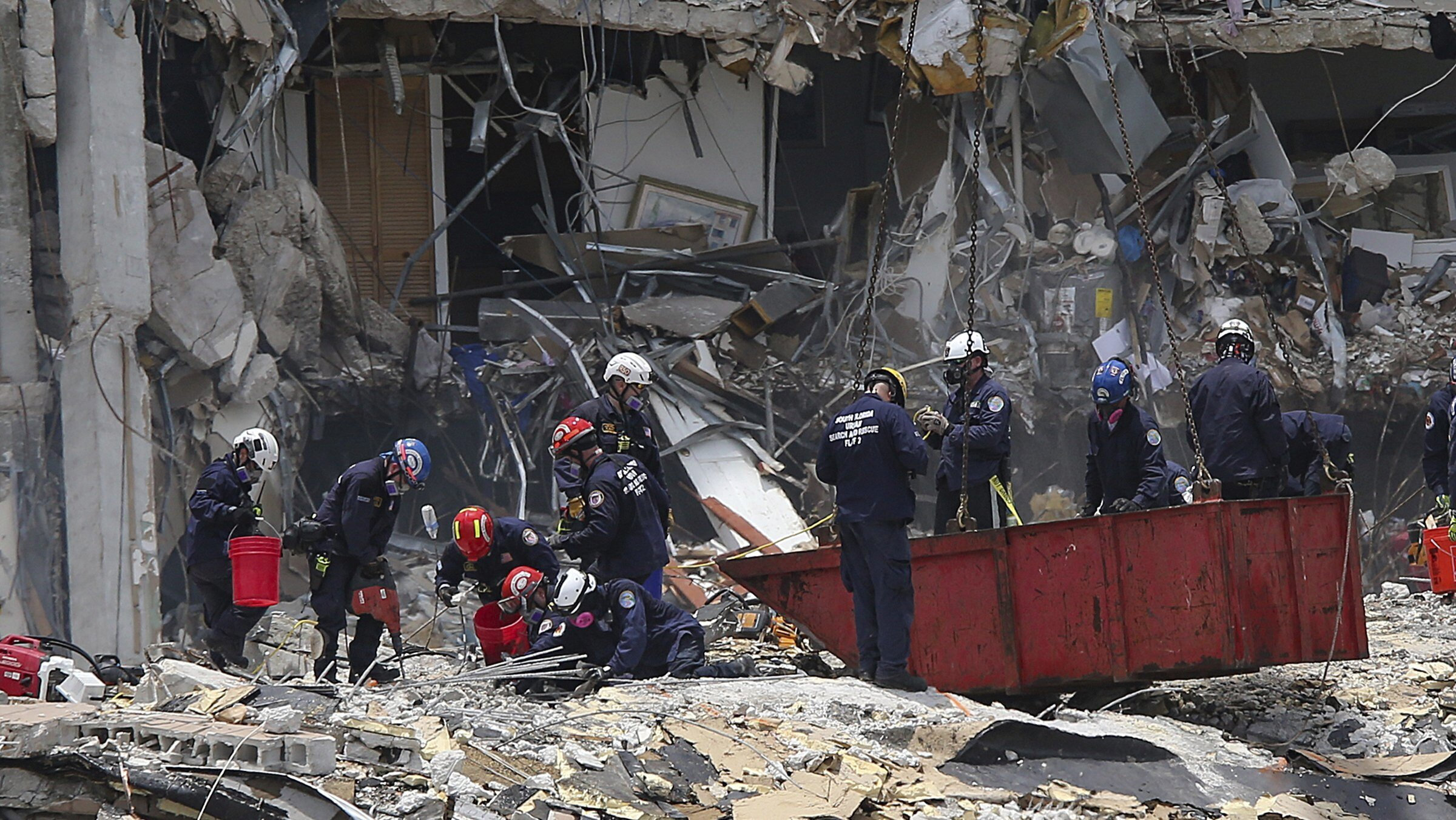
SURFSIDE, Fla. (AP) — The death toll from the collapse of a Florida beachfront condo building has risen to nine as search-and-rescue efforts continue, Miami-Dade Mayor Daniella Levine Cava said Sunday.
One person died in the hospital, and workers pulled four more bodies from the wreckage, the mayor said.
Scores of rescue workers remained on the massive pile of rubble, working to find survivors among the more than 150 people who remain unaccounted for. Four of the dead have been identified and next of kin notified, the mayor said.
Four days after Thursday’s collapse, more than 150 people remain unaccounted for in Surfside, and authorities and loved ones fear the toll will go much higher.
As rotating teams of rescuers used heavy machinery and power tools to clear the rubble from the top and tunnel in from below, the Noriega family hoped that their 92-year-old matriarch, Hilda Noriega, had somehow survived.
When Mike Noriega heard that part of the condominium tower where his grandmother lived had collapsed, he rushed with his father to the scene. They arrived at a nightmarish 30-foot pile of broken concrete and mangled metal, the remains of the 12-story building known as Champlain Towers South.
But among the flying debris, they stumbled across mementos that bore witness to Hilda’s life on the sixth floor: an old picture of her with her late husband and their infant son, and a birthday card that friends from her prayer group sent two weeks earlier with the acronym “ESM,” Spanish for “hand-delivered,” scrawled across the yellow envelope with a butterfly etching.
“There was a message in the mess of all this,” said Mike Noriega, who last spoke with his grandmother the day before the disaster. “It means not to give up hope. To have faith.”
Surfside Mayor Charles Burkett sought to assure families Sunday that rescuers were working nonstop. “Nothing else on our mind, with the only objective of pulling their family members out of that rubble,” he told ABC’s “This Week.”
“We’re not going to stop doing that — not today, not tomorrow, not the next day. We’re going to keep going until everybody’s out.”
The Noriega family described Hilda as a fiercely independent and vivacious retiree — in Mike’s words, “the youngest 92-year-old I know … 92 going on 62.”
Hilda Noriega had called Champlain Towers South home for more than 20 years. But six years after her husband’s death, she was ready to leave. The condo was for sale, and she planned to move in with family.
She loved living near the ocean and friends, but “when you lose a spouse, you want to be surrounded by family … and she wanted to spend more time with her family and grandchildren,” said Sally Noriega, Hilda’s daughter-in-law.
Hilda Noriega was a loving person who built a life with her husband and raised a family after coming to the U.S. from Cuba in 1960, her daughter-in-law said.
“She was just one of those people who from the first time she met a person she instantly loved that person, and that person instantly loved her,” Sally said.
Carlos Noriega, Hilda’s son and police chief of nearby North Bay Village, was one of the emergency responders atop the pile.
The Noriegas don’t entirely know what to make of the treasured mementos found amid the chaos, but Sally said: “We are a family of faith. We’ll just leave it at that.”
They are among dozens of anguished families awaiting word on the fate of loved ones. The wait has been agonizing.
The atmosphere inside a hotel ballroom where around 200 family members were being briefed by authorities Saturday was tense, two people present told The Associated Press on condition of anonymity to discuss the private conversations.
The two said families frustrated with the slow pace of recovery efforts had demanded they be allowed to go to the scene and attempt a collective shout — an attempt as much to find survivors as a cathartic farewell to those who had died.
The mayor said Saturday that the identification of three bodies had dropped the number of people unaccounted for down to 156, and crews also discovered other unspecified human remains. The remains are being sent to the medical examiner, and authorities are gathering DNA samples from family members to aid in identification.
A video posted online showed an official briefing families. When he said they had found remains among the rubble, people began sobbing.
Late Saturday, four of the victims were identified, as Stacie Dawn Fang, 54; Antonio Lozano, 83, and Gladys Lozano, 79; and Manuel LaFont, 54.
Burkett said a city official had led a cursory review of the nearby Champlain Towers North and Champlain Towers East buildings but “didn’t find anything out of the ordinary.”
The news came after word of a 2018 engineering report that showed the building, which was built in 1981, had “major structural damage” to a concrete slab below its pool deck that needed extensive repairs, part of a series of documents released by the city of Surfside.
Further documentation showed the estimated cost of the repairs would total over $9 million. That included more than $3.8 million for garage, entrance and pool remediation and nearly $3.2 million for fixes to the exterior facade.
While officials said no cause for the collapse early Thursday has been determined, Florida Gov. Ron DeSantis said a “definitive answer” was needed in a timely manner.

A mass vaccination clinic held Sunday at Scotiabank Arena in Toronto administered close to 27,000 doses of the COVID-19 vaccine, setting a new North American single-day record.
Public health officials say 26,771 doses were administered to more than 25,000 adults and almost 1,300 youth as part of the “Our Winning Shot” initiative, breaking the previous record of 17,003 set back in April at the Texas Motor Speedway in Fort Worth, Texas.
Officials say they eclipsed the Canadian record with of 10,470 doses, which was set back in May at a Thorncliffe Park clinic, just before 2:30 p.m. ET.
At around 8:30 p.m., Mayor John Tory tweeted that they had reached their goal of administering 25,000 doses.
A total of 981 first doses were given out while 25,793 second doses were administered. Mayor Tory himself received his second dose on Sunday. He got the Moderna shot after receiving AstraZeneca for his first dose back on April 10.
“I had my first dose with AstraZeneca and I had my second dose with Moderna and I just want people to know because there are people that have a lot of questions about this, it’s been a bit confusing,” Tory told those waiting to get vaccinated at the clinic, trying to allay concerns about mixing doses. “It’s safe to do what I did, what some of you did – I wouldn’t have done it if it wasn’t safe.”
The majority of shots given at the clinic were Moderna, while doses of Pfizer were reserved for anyone between the ages of 12 and 17.
Toronto has administered more than 3.2 million vaccine doses since the start of the immunization campaign with 76 per cent of Torontonians having received at least one dose of the COVID-19 vaccine while more than 35 per cent have now been fully vaccinated.
As of Saturday, anyone between the ages of 12 to 17 who live in Durham, Halton, Hamilton, Peel, Porcupine, Simcoe-Muskoka, Toronto, Waterloo, Wellington-Dufferin-Guelph and York are eligible to book their accelerated second vaccine dose appointments.
Starting Monday at 8 a.m., all adults who received a first dose of AstraZeneca vaccine at least eight weeks ago or a first dose of Moderna or Pfizer vaccine at least 28 days ago will be eligible to book an accelerated second doses.
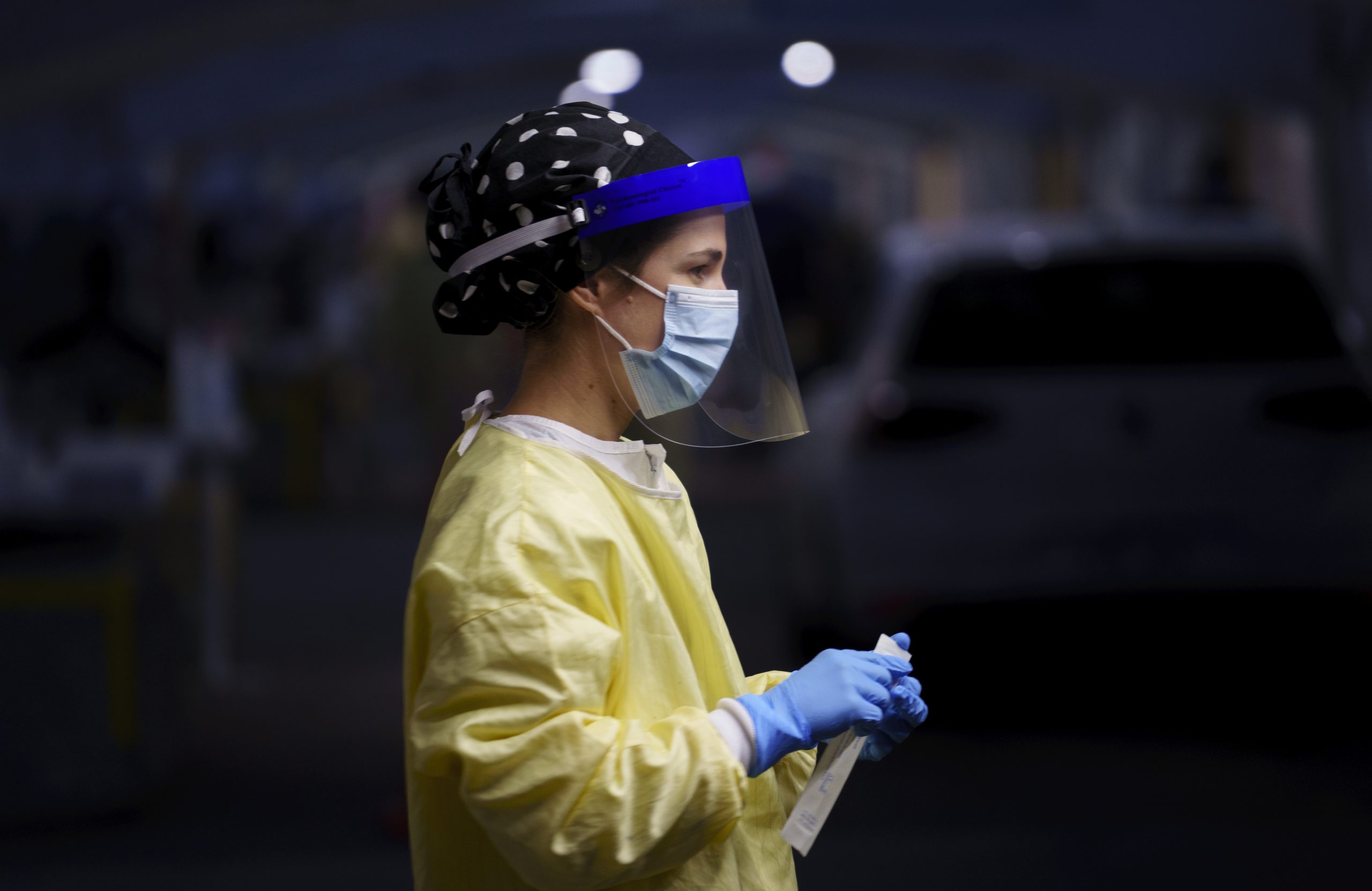
WINNIPEG (CityNews) — An epidemiologist says the death of a child under the age of 10 years old in Manitoba due to COVID-19 is an extremely rare occurrence, but still serves as a tragic reminder that the virus is still present in our lives.
Epidemiologist Cynthia Carr says the Winnipeg girl’s death, which Manitoba health officials reported in the province’s daily COVID bulletin Sunday, was the 13th death in Canada of a person aged 19 and under.
That puts the fatality rate for that age group at 0.05 per cent in Canada.
“It’s so rare in fact that even Health Canada in their weekly surveillance reports — when they report deaths for example by age group — the age group cluster is actually under 19. They don’t even report weekly the numbers of deaths under the age of 10 because it’s so rare.
“So one death for this little girl here in from the Winnipeg region is certainly absolutely tragic, but also very rare. And unfortunately, very rare events do happen.
“It’s a tragic situation and reminds us that this virus is dangerous. It’s killed over 26,000 Canadians, it’s killed over 1,100 Manitobans and made other many many thousands more very very sick in hospital, and many more taking a long time to recover from this virus.”
Prior to this, the youngest known Canadian to die in which COVID-19 was a factor was an infant in B.C. in January. Health officials in that province also confirmed in April that a two-year-old had died as a result of coronavirus.
In April, a 13-year-old girl from Brampton, Ont., became one of four Ontarians under the age of 19 to die from the virus.
Sunday’s provincial health update did not provide more information or the child’s exact age. It is not known either if the girl had any underlying conditions.
It also was not revealed if the child’s death was linked to a variant of concern or the original coronavirus strain.
“What has changed with these variants of concern is their enhanced ability to transmit,” said Carr. “They’re getting better and better at latching onto our cells and getting in, getting more efficient at creating more and more copies once they’re in, and then some are getting even better at starting to be able to evade our immune response.”
Manitoba’s COVID-19 death toll since the start of the pandemic is 1,139.
The province also identified 97 new cases of the coronavirus, but removed one due to a data error. Most of those (50) came from the Winnipeg region. The positivity rate is 6.5 per cent.
There are currently 94 Manitobans hospitalized due to the virus, including 64 in intensive care.
“In Manitoba there’s still about 14,180 cases that are active, that’s a lot of people with active virus,” said Carr. “And you know, even if we’re over 70 per cent of the population aged 12 and over that are vaccinated with their first shot, that’s still a lot of targets that are available for those circulating cases.”
–With files from Marie Gomez
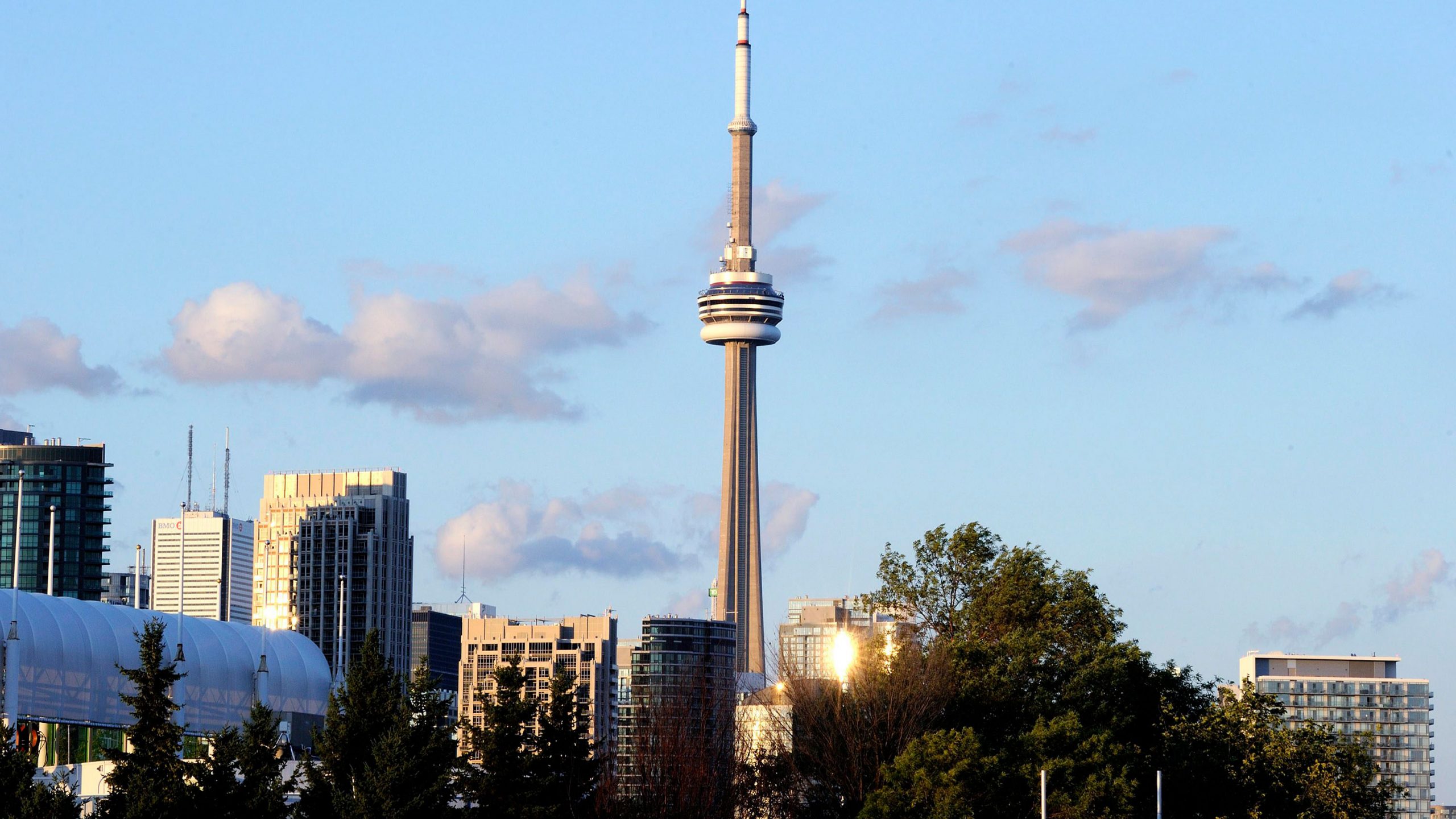
As Canada’s Indigenous communities grapple with the horrific discovery of 751 unmarked graves at a former residential school in Saskatchewan, Toronto is offering condolences and symbols of support.
While many are questioning if Canada Day should be celebrated this year in light the country’s connections to residential schools, Toronto’s most iconic landmark announced a show of solidarity.
The CN Tower will be lit orange on Canada Day (July 1) “in solidarity with and in support of Indigenous communities across Canada.”
In a statement, Toronto mayor John Tory called the discovery of unmarked graves at the former Marieval residential school in Saskatchewan “heartbreaking.”
“This is another tragic reminder of the pain and suffering Indigenous peoples endured at residential schools across our country,” Tory wrote.
“The recent discoveries bring us face to face with a brutal truth that we must acknowledge and never forget … we remain committed to doing the real work of reconciliation.
The City of Toronto said it would be lowering flags to half mast on Thursday, as well as dimming the Toronto sign and silencing its social media channels.
Last month another mass grave was unearthed by the Tk’emlups te Secwepemc First Nation at the former Kamloops Residential School in British Columbia.
The remains of 215 children, some as young as three years old, were found buried on the school grounds – once the largest in Canada’s residential school system.

















 ????
????
